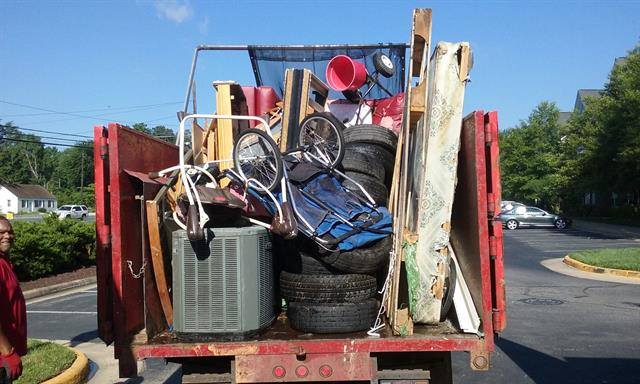Expert Waste Monitoring Techniques Customized for Industrial Setup
In industrial environments, the administration of waste is a crucial facet that requires precision and knowledge. Tailoring waste monitoring methods to suit the distinct requirements of commercial setups is not just valuable yet important for maintaining operational effectiveness and environmental sustainability. By understanding the ins and outs of different kinds of commercial waste, carrying out correct managing treatments for harmful products, and developing effective recycling methods, businesses can dramatically lower their environmental footprint and potential liabilities. The pursuit for enhanced waste monitoring in commercial setups entails a careful technique that balances regulative compliance, cost-effectiveness, and eco-friendly obligation.
Importance of Tailored Waste Management
Tailored waste monitoring techniques are essential in industrial setups to maximize source application and decrease ecological influence. Industrial procedures produce a considerable amount of waste, ranging from solid by-products to chemical pollutants, posing a threat to the setting otherwise handled efficiently (Atlanta junk hauling). By tailoring waste administration techniques to suit the details requirements and challenges of each commercial facility, firms can not just adhere to regulations yet likewise boost operational efficiency and sustainability
One trick aspect of customized waste administration is performing a comprehensive waste assessment to recognize the types and quantities of waste generated. This analysis allows companies to implement targeted options such as recycling programs, waste partition protocols, and waste-to-energy efforts. By understanding the structure of their waste streams, commercial facilities can establish cost-effective methods to minimize waste generation at the source, bring about long-lasting ecological benefits.

Sorts Of Hazardous Waste
What are the various classifications of hazardous waste frequently created in making processes? Industrial waste can be classified into several major categories based upon its composition and characteristics. Harmful waste is one of one of the most crucial types, including chemicals, solvents, heavy metals, and various other products that posture a danger to human wellness or the setting. This classification commonly calls for special delivery and disposal techniques to stop contamination and guarantee security.
One more common kind of hazardous waste is non-hazardous waste, which incorporates materials like paper, plastics, and packaging waste. While non-hazardous waste might not present prompt threats, appropriate management is still vital to decrease land fill use and promote recycling and sustainability practices.

Contaminated Materials Handling Procedures
Effective monitoring of contaminated materials in commercial settings demands strict adherence to developed handling procedures to mitigate dangers and ensure environmental safety and security. Dangerous waste handling treatments involve several vital steps to reduce the possible effect on human health and wellness and the setting. Firstly, proper recognition and classification get redirected here of hazardous waste are crucial. This includes identifying the features of the waste to ascertain the suitable handling, storage space, and disposal approaches.
Secondly, once identified, contaminated materials should be thoroughly segregated from non-hazardous waste to prevent contamination and make sure appropriate treatment. Storage of contaminated materials should abide by regulations relating to control, labeling, and compatibility to stop leaks, spills, or other cases that can jeopardize workers or the environment.
Furthermore, taking care of treatments must include making use of individual safety devices, worker training, and emergency reaction methods. Normal evaluations, monitoring, and documents of contaminated materials handling activities are important to maintaining conformity and determining areas for renovation. By complying with these structured procedures carefully, industrial centers can properly handle hazardous waste and promote their commitment to ecological stewardship.
Applying Efficient Recycling Practices

To implement effective reusing techniques, industrial facilities must initially conduct a waste audit to check out here determine the kinds and amounts of recyclable materials produced in their procedures. Based upon this audit, firms can then develop assigned reusing terminals, provide suitable training to workers on appropriate sorting strategies, and team up with trusted recycling partners for the collection and processing of materials. Furthermore, establishing details reusing objectives, tracking progress, and routinely interacting with personnel regarding the value of reusing are essential steps to ensure the success and sustainability of recycling initiatives in industrial settings.
Monitoring and Continuous Improvement
To ensure the effectiveness and sustainability of waste administration approaches in commercial setups, the execution of durable tracking and constant enhancement procedures is vital. Tracking involves tracking key efficiency indications (KPIs) such as waste generation rates, recycling percentages, and disposal prices. Frequently assessing these metrics permits businesses to recognize areas for improvement and measure the success of applied waste monitoring efforts.
Continuous renovation is necessary for fine-tuning procedures with time. It includes evaluating keeping track of data, recognizing ineffectiveness, and executing changes to maximize waste administration practices better. This repetitive approach cultivates a culture of recurring enhancement and innovation within the company.
Making use of technology like waste tracking software application and IoT sensors can improve checking efforts, supplying real-time information description for informed decision-making. Worker training and involvement also play a crucial role in making sure the success of surveillance and continuous enhancement efforts, as frontline team are frequently principals in waste monitoring processes.
Final Thought
To conclude, customized waste monitoring strategies are important for commercial setups to effectively manage different kinds of waste, consisting of unsafe products. By implementing efficient recycling techniques and constantly tracking and boosting waste monitoring procedures, industries can reduce their ecological effect and make certain conformity with laws. It is essential for companies to prioritize waste monitoring to protect the environment and promote sustainability in their procedures.